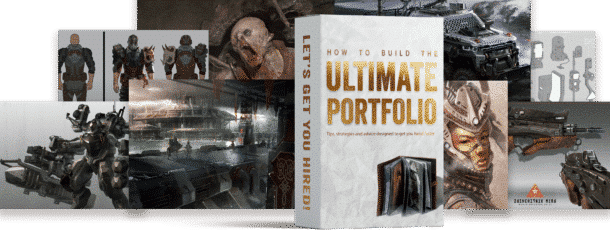Question submitted by Michael, Student artwork provided by Hector Ruiz
I DO PRIMARILY DRAWINGS CENTERED AROUND PEOPLE AND CHARACTERS. MY STRENGTH IS VERY MUCH IN THE DIRECTION OF ORGANICS AND NOT MECHANICAL DRAWINGS, AND I WILL ALWAYS BE BETTER AT ORGANICS, IT’S A SIMPLE TRUTH. I HAVE NOTICED AMONG ARTISTS, YOU ARE REALLY GOOD AT ONE OR THE OTHER, SELDOM BOTH, THOUGH IT DOES HAPPEN. SHOULD I EXPAND MY SKILL SET TO INCLUDE OTHER THINGS, LIKE MECHANICAL AND ENVIRONMENTS AND SHOW THOSE TOO, OR SHOULD I CONCENTRATE ON WHAT I AM GOOD AT AND SHOWCASE THAT IN MY PORTFOLIO? WHAT IS IT THAT THE INDUSTRY LOOKS FOR IN AN ARTIST THAT SPECIFICALLY WANTS TO BE A CHARACTER DESIGNER?
Hey Michael, thanks for writing in. Here are my comments:
“…AND I WILL ALWAYS BE BETTER AT ORGANICS, IT’S A SIMPLE TRUTH…”
Saying that you will “always” be better at one thing over another may mean that you are very focused in your choices and have honed in on the thing you like drawing the most. If that’s the case, then Kudos there. Just make sure that your organic designs, forms and volumes are immaculate.
However, as a professional who has seen hundreds of student and professional portfolios, I find that in most cases people who are “better at organics” tend to be those who are less comfortable with perspective. I’m just guessing here, but this is the more likely of the two scenarios.
Regardless, the truth remains: You can’t have an understanding of organic shape and form without an understanding of perspective. So if you suck at hard surface designs, perspective. etc, then my first piece of advice would be to practice those skills. Then practice some more!. Your designs will thank you for it as they can only improve.
“…I HAVE NOTICE AMONG ARTISTS, YOU ARE REALLY GOOD AT ONE OR THE OTHER, SELDOM BOTH…”
That’s a bit of a generalization. There are usually SEVERAL things that a person is good at drawing, each of which borrow from a similar skillset. For example; if you are comfortable with characters and anatomy, you may also be comfortable drawing portraits, creatures, monsters, etc.
Likewise, if you are comfortable with perspective, then you can probably design hard surface things like props, weapons, or even vehicles and/or environments. Keep in mind that being good at only ONE thing, limits your marketability, flexibility and in turn, value to a potential company.
“…SHOULD I EXPAND MY SKILL SET TO INCLUDE OTHER THINGS, LIKE MECHANICAL AND ENVIRONMENTS AND SHOW THOSE TOO, OR SHOULD I CONCENTRATE ON WHAT I AM GOOD AT AND SHOWCASE THAT IN MY PORTFOLIO?”
Normally, when taking the “specialist” route, I would say master only the things that you are good at, but being a character artist is a bit different. The reality is that being a character artist is THE MOST sought after job and thereby the most competitive field in the video game industry. There are way too many candidates to fill the few jobs available for this position. Therefore, if this will be your main focus, then you will need to be AMAZING at it.
As a fall back, I often encourage character artists to expand their skillset when possible. This usually starts with perspective and hard surface designs, but can be anything else that will diversify your portfolio. Again, it’s all about adding value to you as an artist, so that if a client isn’t impressed with your character work, they may still have a job for you doing something else.
“WHAT IS IT THAT THE INDUSTRY LOOKS FOR IN AN ARTIST THAT SPECIFICALLY WANTS TO BE A CHARACTER DESIGNER?”
If you want to solely be a character designer, it would help to show a few examples of things like these in your character portfolio:
- Unique design aesthetics: (What design language do you develop throughout your figure and how consistent is it?)
- Artistic Style: (How do you render your figures? Are they cartoony? Realistic? Stylized?)
- Character attitude/ personality: (How well do you convey personality in your designs? Facial expressions, posture, and stance all play a part here).
- How well do you know your subject matter? (Is the character believable? Are the designs grounded in reality or totally fabricated? What creditability do your designs have?.
- Fresh design approach on an old subject matter: How do YOU tackle an established Pop culture icon? Intellectual property, etc.
I hope that helps. See: The Big Bad World of Concept Art For Video games; An Insider’s Guide For Students, Chapter 4: The Portfolio (page 79) for more specifics on building your portfolio.


